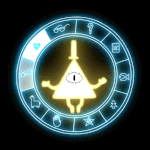|
MadScientistWorking posted:Pathfinder 2E isn't perfect about this in their APs but typically speaking if you come across a feat involving log rolling your sure as hell probably going to be rolling logs in the book the log rolling feat comes from. That was hyphz' example, not mine. I don't even know what the feat is specifically, I'm working from how it makes sense with the overall play structure of 2e.
|
|
|
|

|
| # ? May 17, 2024 22:51 |
|
Arivia posted:RAW/RAI is a terrible nonfunctioning way to look at RPG books, please do better than that. That's...a weirdly condescending reply? Arivia posted:And exactly, no one is ever likely going to give up a class feat to do it. So what's the problem? It's an opportunity cost for something where the opportunity is nil. Pathfinder 2e is not about coming up with cool new plans and putting them into play to get an advantage, it's specifically the idea of using your existing proficiencies in the preconstructed set pieces. But I don't think that really brings up the larger design issue that the feat was originally brought up as an example of, which is the general imbalance in utility of the various feats of Pathfinder 2e. It falls into much the same problem most other editions of D&D have had with feats, which is that there's a very wide gulf in utility from one feat to the next, and that codifying relatively simple actions with feats means that characters are unable to perform those actions without first taking the feat. This isn't necessarily a major drawback, but it's still a drawback to the design of the system as a whole. The log rolling feat is an example of how this problem can become more pronounced, where a very specific action that will only come up in select scenarios, but would not require a whole lot of skill for a character to perform, has a feat with weirdly restrictive prerequisites attached to it.
|
|
|
|
KingKalamari posted:
|
|
|
|
This is the site of the first non-Gary's-living-room Gen Con, for those who didn't know.
|
|
|
|
To be clear, I think the Log Rolling thing has been presented poorly and the design work behind how it plays out portrayed even worse. So, PF2E has a type of feat called archetypes, that handle a number of things including what previously would be multiclassing and prestige classes. Additionally, because Paizo acknowledges that sometimes you just want to have your players able to do cool dips, they added some rules to one of the recent books to cover giving players a free feat track that can only be used for achetype feats so that you can have these sort of distinctive characters without the push/pull of trying to work these feats into your class feat progression. One of the things they've done with Archetypes is to create setting specific profressions/subclasses/prestige classes that get access to new and different feats that are placed into the specific adventures as opposed to their larger player-facing books. The idea is that, while playing an adventure, your players can "join up" with the locals and get access to some new specialized stuff. To me, this is cool. I don't get why that concept is painted in a negative light because any time I've seen something similar in various systems, where you can ally with in-game factions, players tend to eat that up. In 1 specific adventure, you meet a lumberjack company. If you can befriend them, they'll induct you into their group and you get access to a few cool things. Yes, 1 of which is literally called Log Roll. But it's not specifically about log rolling and the description doesn't mention logs or rolling at all. See here:  No, this isn't an "every fight" action. But it's the equivalent of Daniel-san learning to wax cars and paint fences in order to do sick karate moves. You learn to roll logs, and the next time you are on a narrow causeway or loose gravel or whatever, you apply your sick log rolling skills to get a better Trip action. To me, this is cool, and sneering down your nose at "Oh, there better be 100 logs to roll" is kind of missing the point.
|
|
|
|
The actual feat people keep talking about : What this actually does when you're not obsessing over the name: when you and an enemy are on narrow or uneven ground (logs, ledges, rubble, frozen surfaces, etc), you can make a trip attempt using Acrobatics vs Reflex, when normally you can only do so with Athletics vs Reflex. It's actually a very broad condition as long as the GM isn't just ignoring terrain entirely, since there's quite a lot of places that Pathfinder characters go that should be counting as uneven ground by default. Edit: I was tooo sloooow
|
|
|
|
I feel like this tangent isn't too far afield or overwhelming for the thread, but it should definitely not include "X broad approach to understanding how games work is fukken dumb" please.
|
|
|
|
Toshimo posted:To be clear, I think the Log Rolling thing has been presented poorly and the design work behind how it plays out portrayed even worse. That's definitely a more reasonable system than it had been presented in the thread. As initially presented, I thought that these sorts of feats were competing with things like class and ancestry feats for space on the character sheet. Them using their own dedicated track makes them much more reasonable
|
|
|
|
KingKalamari posted:That's definitely a more reasonable system than it had been presented in the thread. As initially presented, I thought that these sorts of feats were competing with things like class and ancestry feats for space on the character sheet. Them using their own dedicated track makes them much more reasonable If it's an archetype feat you have to take it in place of one of your class feats. in addition to the prerequisite feat which is Also an archetype feat. Basically Archetypes in PF2 are the design space for Prestige classes and multiclassing.
|
|
|
|
Didn't take Skill Focus: Rolling the Log? Then you can't be the Log Fucker.
|
|
|
|
Kurieg posted:If it's an archetype feat you have to take it in place of one of your class feats. in addition to the prerequisite feat which is Also an archetype feat. The new common thing in PF2 is the Free Archetype variant which gives everyone free Archetype feats, so you don't have to spend class feats on them. Probably should have been core but at least its an official option now.
|
|
|
|
Piell posted:The new common thing in PF2 is the Free Archetype variant which gives everyone free Archetype feats, so you don't have to spend class feats on them. Probably should have been core but at least its an official option now. So basically the way that Themes were basically assumed in 4E but Themes can now also be Multiclassing?
|
|
|
|
Kurieg posted:So basically the way that Themes were basically assumed in 4E but Themes can now also be Multiclassing? Pathfinder 2nd may be better but it is still Pathfinder, with all the cludge and half fixes that implies. The Archetype track helps a ton, though I am remind of that Legend RPG that had different tracks for its classes and that 4th ed's power system was simpler even if feats are still completely borked.
|
|
|
|
KingKalamari posted:That's...a weirdly condescending reply? There's not really any other way to respond to "well this looks bad according to this very stupid idea about how to read RPG books from 20 years ago which doesn't match how people read books at all or have discussions with other people and gets passed around like a bad cold." If you want to make a criticism, say it - don't fall back on the sophistry of "well this feels bad if I silo my readings in these very specific ways that have no relation to reality." quote:But I don't think that really brings up the larger design issue that the feat was originally brought up as an example of, which is the general imbalance in utility of the various feats of Pathfinder 2e. It falls into much the same problem most other editions of D&D have had with feats, which is that there's a very wide gulf in utility from one feat to the next, and that codifying relatively simple actions with feats means that characters are unable to perform those actions without first taking the feat. This isn't necessarily a major drawback, but it's still a drawback to the design of the system as a whole. That's the whole point that Pathfinder 2e is making though: there isn't any "relatively simple action" that people should be able to do without the game explicitly letting them do it. There isn't some "basic level of character skill" beyond the actual defined basic actions and untrained skill actions that anyone can do. Nothing else exists. So the focus changes from "this feat is lovely because it takes away something everyone should be able to do" to "this feat adds a thing that you can do and that is explicitly not something else other people can do," which is how Pathfinder 2e already defines character capabilities starting from level 1 in the CRB with skill proficiencies. Then you have the question of "what is the utility of this feat" - and that utility is a much more diffuse question, because Pathfinder 2e also repeatedly says that not all feats, archetypes or other options are going to be useful in all games. It's okay for them to print stuff that's only useful in "Jim's Log Rolling Game" because there's a bunch of tools (free archetypes, rarity and access, etc) to say "hey, this is good for this game and this other feat is not." And it's okay for Log Rolling to not be as good as the best feat for your class at level 4, because it's not a thing you immediately need to take at level 4, nor is it immediately restricted to one class (as it's an archetype), and it ties in with your other abilities regarding Acrobatics, falling enemies, getting enemies flat-footed, et cetera. To reiterate: there's no innate ability to go log rolling that the archetype feat is denying people. there's no specific other feat that log rolling gets compared to and is instantly worse, because Pathfinder 2e emphasizes very strongly this idea that you should be mixing the existing material and making selections of possible options for the group, THEN choosing between those, instead of comparing it to literally every other feat ever.
|
|
|
|
King of Solomon posted:Well, not anything. They're pretty specific that they will not tolerate hatred toward protected groups in products using their setting, which is important. A little narrow for my taste since it implies it's acceptable to use Lancer's rules to create racist properties so long as you don't use their setting, but it's something at least. To clarify, it actually does say "setting or system" in that clause.
|
|
|
|
Kai Tave posted:To clarify, it actually does say "setting or system" in that clause. Oh, good! That's much better then.
|
|
|
|
Arivia posted:There's not really any other way to respond to "well this looks bad according to this very stupid idea about how to read RPG books from 20 years ago which doesn't match how people read books at all or have discussions with other people and gets passed around like a bad cold." If you want to make a criticism, say it - don't fall back on the sophistry of "well this feels bad if I silo my readings in these very specific ways that have no relation to reality." Okay, Iíll bite. Whatís the problem with Rules As Written? Hell, what is Rules as Written/Rules as Intended as a method of critique? Kai Tave posted:To clarify, it actually does say "setting or system" in that clause. Devastated that I canít make my custom LANCER system where you mix and match parts to build your own racist
|
|
|
|
thetoughestbean posted:Okay, Iíll bite. Whatís the problem with Rules As Written? Hell, what is Rules as Written/Rules as Intended as a method of critique? "Rules as Written" is the strict idea that only the exact wording, punctuation, and grammar of the written rulebook's text matter, like it's the Ten Commandments or the US Constitution or some other holy text carved in stone. "Rules as Intended" is adding strictly the developer or designer's interpretation of the "RAW" text to interpreting it. Neither of these methods match how humans read and write, period. Neither of these allows for any difference in reading between the readers, any other interpretations, or any understanding of the game beyond the most basic level of reading the printed word. (To put it another way, there are literary criticism techniques for solely looking at the text on a page, but they require a lot more rigor, care, and depth of analysis than you get from "RAW.") They're shibboleths flung around from forums arguments about D&D 3e 20 years ago, and neither of them is actually a productive way to approach reading, understanding, or criticizing RPGs (any of them, whether it's Pathfinder 2e or Lasers and Feelings.)
|
|
|
|
Arivia posted:"Rules as Written" is the strict idea that only the exact wording, punctuation, and grammar of the written rulebook's text matter, like it's the Ten Commandments or the US Constitution or some other holy text carved in stone. "Rules as Intended" is adding strictly the developer or designer's interpretation of the "RAW" text to interpreting it. I kind of get you. Do you have any examples of stuff like this?
|
|
|
|
thetoughestbean posted:I kind of get you. Do you have any examples of stuff like this? Examples of what? Where RAW sucks? Where it's bad for arguments? How humans engage with written text? I'm not being sarcastic, I just don't know what examples you're looking for. Other people can answer any of these examples you'd like, most likely.
|
|
|
|
I meant people using RAW as a critique/method of engaging the work, sorry.
|
|
|
|
Arivia posted:There's not really any other way to respond to "well this looks bad according to this very stupid idea about how to read RPG books from 20 years ago which doesn't match how people read books at all or have discussions with other people and gets passed around like a bad cold." If you want to make a criticism, say it - don't fall back on the sophistry of "well this feels bad if I silo my readings in these very specific ways that have no relation to reality." thetoughestbean posted:Okay, Iíll bite. Whatís the problem with Rules As Written? Hell, what is Rules as Written/Rules as Intended as a method of critique? Yeah, I'm also not following how looking at something from a RAW/RAI perspective is some sort of intellectual failing Arivia posted:That's the whole point that Pathfinder 2e is making though: there isn't any "relatively simple action" that people should be able to do without the game explicitly letting them do it. There isn't some "basic level of character skill" beyond the actual defined basic actions and untrained skill actions that anyone can do. Nothing else exists. But that opens up the design problem that there is no amount of class resource that could cover all the actions a character could possibly do? Like, what you are describing is straight-up the straw-man people used to use to argue that players can't improve or reflavour their actions in 4e, except applied as a benefit to a system? Arivia posted:So the focus changes from "this feat is lovely because it takes away something everyone should be able to do" to "this feat adds a thing that you can do and that is explicitly not something else other people can do," which is how Pathfinder 2e already defines character capabilities starting from level 1 in the CRB with skill proficiencies. That...doesn't sound like a good game design decision? If the feats are as weirdly situational as the log-rolling example is, there's no way that you're given enough of them to actually cover the full extent of what your character would be able to do This is not even a criticism of Pathfinder 2e, it's a criticism of how you're presenting Pathfinder 2e as you're making this game sound like VTNL. Arivia posted:Then you have the question of "what is the utility of this feat" - and that utility is a much more diffuse question, because Pathfinder 2e also repeatedly says that not all feats, archetypes or other options are going to be useful in all games. It's okay for them to print stuff that's only useful in "Jim's Log Rolling Game" because there's a bunch of tools (free archetypes, rarity and access, etc) to say "hey, this is good for this game and this other feat is not." And it's okay for Log Rolling to not be as good as the best feat for your class at level 4, because it's not a thing you immediately need to take at level 4, nor is it immediately restricted to one class (as it's an archetype), and it ties in with your other abilities regarding Acrobatics, falling enemies, getting enemies flat-footed, et cetera. But feat selection is limited, this particular feat is incredibly situational and most likely trumped by more versatile or effective feats. It's basically just cluttering up the list of options. You could apply this exact same line of reasoning to the ridiculously off-balanced feats and ivory tower design of 3.x, or the Crossbow Mastery debacle of Pathfinder 1e.
|
|
|
|
thetoughestbean posted:I meant people using RAW as a critique/method of engaging the work, sorry. here's a quick google of an example, from a guide to optimizing wizards in 5e: https://docs.google.com/document/d/1IeOXWvbkmQ3nEyM2P3lS8TU4rsK6QJP0oH7HE_v67QY/edit Sculpt Spells: Remove the sting out of AoE spells that would include an ally (Evocation only naturally). This makes blaster style Wizards actually good, as now you can blat with impunity. By RAW, you can not exclude yourself from damage (which is pretty weird if you ask me), but you can move before you cast, so its not as big a deal as you think. In this, you can see the basic problem - not engaging with the actual issue at hand, but instead just going "well, the book SAYS this and I think it's weird but I can't do anything about it." It's particularly prominent in the optimization/play communities for 3e and derivatives (including Pathfinder and 5e), but it abdicates the idea of actually making the game better or engaging with the writers/products into these very specific siloes of what is or isn't acceptable. The idea is that if you pick your "way" of reading a rulebook (RAW/RAI), then everything is clear and nothing else matters, and you can just abdicate any responsibility for engagement. I'm not making this idea up, here's how it got treated for 5e Sage Advice and how Giant in the Playground (probably the biggest optimizer or RAW/RAI place these days) handled it https://forums.giantitp.com/showthread.php?398993-On-RAW-RAI-amp-RAF
|
|
|
|
KingKalamari posted:That...doesn't sound like a good game design decision? If the feats are as weirdly situational as the log-rolling example is, there's no way that you're given enough of them to actually cover the full extent of what your character would be able to do As has already been mentioned repeatedly (and in a post that you replied to!) the 'log-rolling example' is not, in fact, weirdly situational.
|
|
|
|
KingKalamari posted:But that opens up the design problem that there is no amount of class resource that could cover all the actions a character could possibly do? Like, what you are describing is straight-up the straw-man people used to use to argue that players can't improve or reflavour their actions in 4e, except applied as a benefit to a system? I guess? I'm not familiar with the strawman, but the idea is very much "you only do what the rules explicitly tell you you can do, not what you think you can do" - that's been one of the major criticisms of Pathfinder 2e from 1e holdouts, that they CAN'T do everything they think their character should do. Pathfinder 2e doesn't really care about what you think your character should be able to do, it specifically dictates what your character can do and lets you move around in that space of gameplay choices. It's incredibly gamey with a literal whitelist of actions per character. quote:But feat selection is limited, this particular feat is incredibly situational and most likely trumped by more versatile or effective feats. It's basically just cluttering up the list of options. You could apply this exact same line of reasoning to the ridiculously off-balanced feats and ivory tower design of 3.x, or the Crossbow Mastery debacle of Pathfinder 1e. I don't think you understood, so I'll try and rephrase it. Pathfinder 2e gives the GM and the group explicit tools right in the core system for deciding what the usable game options are for the campaign; what to keep, what to not use, and how accessible literally anything in the game is. This includes archetypes and feats. Because of this, the value of any game object beyond the most basic (off the top of my head, this would be ability scores, skills but not skill feats, and the basic action list) is always conditional on the predetermined style and agreed upon ideas of the campaign. It's explicitly repudiating the idea of there being one big list of feats that you're always returning to, because you're instead looking at what is contextually available to your character in the campaign. You have limited selections, yes, but you're NEVER choosing from full felicitous access to everything. Because of this, Paizo printing the Lumberjack archetype to enable being a Lumberjack in the Lumberjack game makes much, much more sense, as the whole way they are expanding the system as a whole is by facilitating specific additions to set up specific campaigns. You're not looking at "why would I take Lumberjack compared to the 220 other archetypes" you're instead looking at "what does Lumberjack do for me compared to the five other archetypes I have access to in this campaign."
|
|
|
|
Arivia posted:I guess? I'm not familiar with the strawman, but the idea is very much "you only do what the rules explicitly tell you you can do, not what you think you can do" - that's been one of the major criticisms of Pathfinder 2e from 1e holdouts, that they CAN'T do everything they think their character should do. Like, remember, Pathfinder 1e is the game where you have to spend a feat just to be able to punch somebody without a penalty, restraining equal-level enemies is basically impossible without endless min-maxing, and you have to spend literally all of your skill points if you want your fighter to be good at both fishing and cooking.
|
|
|
|
Like I'm not kidding about how incredibly strict Pathfinder 2e is about doing things that are not explicitly already written up as a thing you can do. Here's the section on how to adjudicate such things in the game rules: http://2e.aonprd.com/Rules.aspx?ID=507 Note that it is always, always returning you to other rules elements to apply. The section on "undefined actions" is for how long something takes and whether you need a hand free to do it, or need to be able to concentrate, etc. The game does not let you roll ability checks as a fall back if nothing else applies. Everything is SOMETHING you have proficiency in, or you're not rolling it. (The exception being what's called a flat check, which is literally just rolling a d20 with no modifiers and seeing what comes up - if you want a 50% chance of something, that's written as a DC 10 flat check.) The same chapter talks about failing forward and not making your PCs roll to tie their own shoes or whatever, so it's not making the game relentlessly unfun - but when ANYTHING is at stake in Pathfinder 2e it is very explicitly always saying "you do it my way, and here's how to do it."
|
|
|
|
Roadie posted:I find it weird to call PF 2e here 'incredibly gamey' when compared to 1e, the list of stuff you can actually do with any chance of success from the word go is much larger. Yeah, but the point is finely different - Pathfinder 1e says "sure, you can do that, anyone can do that!" and then the math gets all hosed and you learn you can't really do that without a feat or a particular build. Pathfinder 2e just says "no, you can't do that unless you're explicitly allowed to" but once you're explicitly allowed to, the math just works. The first one feels more narrative and roleplaying focused before it blows up in your face; the second is much more specific about game mechanics and because of that is much more explicitly focused on the game as a game from the very beginning. Fishing and Cooking are on the basic skill list in Pathfinder 2e, too - they're just in the Lore skills. Want to subsist off fishing? That's Survival. Oh, yes, the game does care about what you're doing for food on a weekly basis.
|
|
|
|
Roadie posted:As has already been mentioned repeatedly (and in a post that you replied to!) the 'log-rolling example' is not, in fact, weirdly situational. Okay, "The text of the log rolling feat is much more broadly applicable than was presented" is a concept that I completely understand and it is my bad for sticking with the log-rolling feat as the discussion example. Where I am getting confused is the broader topics of game design philosophy Arivia has brought up because I feel like there are a bunch of concepts that were either not being effectively communicated, or I was not picking up on. That said, this: Arivia posted:
Does clarify a decent chunk of the points I was confused on. I think I better understand the point you're trying to make and, while I think that there is still room for criticism of the model you're describing (It sounds feat bloat can still become a problem to a GM curating a home game that isn't using a pre-curated adventure path, though Paizo has always focused very heavily on adventure paths as their main revenue stream so I can at least understand why that might be a design goal), however that's something of a different discussion. Arivia posted:
And I think my other point of confusion is that you'd previously chastised someone for applying a very RAW-focused interpretation of the rules as a criticism of the system, while also espousing a very RAW-centric explanation of the system as a whole. I feel like this might be a case of you presenting your point in the same way you would to the 1e holdouts you mentioned, which are confusing to people like myself not already familiar with the existing discourse?
|
|
|
|
KingKalamari posted:And I think my other point of confusion is that you'd previously chastised someone for applying a very RAW-focused interpretation of the rules as a criticism of the system, while also espousing a very RAW-centric explanation of the system as a whole. I feel like this might be a case of you presenting your point in the same way you would to the 1e holdouts you mentioned, which are confusing to people like myself not already familiar with the existing discourse? I'm not engaging with the RAW framework at all. Like I said, it sucks and it's useless to the point of being a non-starter for actual conversation, so your entire first sentence means absolutely nothing to me. I have explained what is in the rules of the game as I see them, if someone disagrees or if I've missed something I'm totally open to criticism. I'm not trying to respond to "1e holdouts", but I was trying to respond to you and the other posters who looked to have preconceptions about how Pathfinder 2e works based off of Pathfinder 1e, and which are not borne out by 2e itself.
|
|
|
|
I have never wanted to find out something like "Greg Stolze eats live babies" than I do right now.
|
|
|
|
Lynx Winters posted:I have never wanted to find out something like "Greg Stolze eats live babies" than I do right now. Somehow weird Twitter callouts seem soothing in comparison to an edition war between PF1e and 2e by people who play neither.
|
|
|
|
Yo, folks, it looks like poo poo has calmed down here but please be kind to your fellow goons and keep the temperature of this discussion around this level of chill right here, rather than the distinct lack of chill we were approaching earlier. Thanks, all 
|
|
|
|
admanb posted:Somehow weird Twitter callouts seem soothing in comparison to an edition war between PF1e and 2e by people who play neither. I was running PF2e and enjoying it a lot until my group failed to make the transition to online in the pandemic and fell apart, it sucked.  It took awhile to wrap my head around the system - it's very similar in structure to 4e in that "the game cares about this stuff and just gets the gently caress out of the way for everything else" way, where you need to unlearn a bunch of expectations and previous ideas about how a modern D&D SHOULD work. I can't blame anyone else for being confused about it, or not "getting it" - it takes awhile.
|
|
|
|
Arivia posted:"Rules as Written" is the strict idea that only the exact wording, punctuation, and grammar of the written rulebook's text matter, like it's the Ten Commandments or the US Constitution or some other holy text carved in stone. "Rules as Intended" is adding strictly the developer or designer's interpretation of the "RAW" text to interpreting it. That's a pretty reductionist take, I think. RAW is about what actually got published in the book, and how players who do not have the benefit of developers' knowledge of design intent and iterative playests will interpret the text.
|
|
|
|
Liquid Communism posted:That's a pretty reductionist take, unsurprisingly. That may be your interpretation, but the thousands of endless arguments it has spawned over the years on the internet are overwhelmingly in my experience "RAW is that only the written words mean anything and nothing else is valid at all." That definition is also what got cited by Crawford and the GitP posters in the thread I linked. e: i don't think it's worth arguing this point further, as both of us have different viewpoints of 20 years old forums lingo. Unless hyphz wants to pop up with specifically what he meant originally, we should probably let it go. Arivia fucked around with this message at 06:11 on Mar 26, 2021 |
|
|
|
I've seen plenty of games that say "if the book doesn't have rules for how your character does a thing, then they can just do it and you don't need to roll." I'm just now hearing that PF2 is "if there are no rules in the book for how to do a thing, your character cannot do it at all. Cannot even attempt it..." Is that true? That's incredibly ambitious and requires a huge amount of confidence to think that you've managed to cover every single action that a character might reasonably try to do. Just to throw out an example so I can understand... Are there rules for damming a river? If not, that means the players can't even try to dam a river. Which is weird because a literal rodent can manage it so you'd think it would be something a human could at least try. But maybe they really did think of everything and wrote rules for that sort of thing? How would that work?
|
|
|
|
I believe that what Arivia actually meant there was that PF2 wants you to only do what the text says you can in the context of delineated rules structures that the game revolves around, eg combat. So as an example in isolation, the PCs can probably try to dam a river just fine. But if that comes into contact with things like combat or however PF2 does downtime actions (I forget), PF2 wants you to limit its effects to what's already possible under that umbrella.
|
|
|
|
Arivia posted:They're shibboleths flung around from forums arguments about D&D 3e 20 years ago, and neither of them is actually a productive way to approach reading, understanding, or criticizing RPGs (any of them, whether it's Pathfinder 2e or Lasers and Feelings.)
|
|
|
|

|
| # ? May 17, 2024 22:51 |
|
Arivia posted:That may be your interpretation, but the thousands of endless arguments it has spawned over the years on the internet are overwhelmingly in my experience "RAW is that only the written words mean anything and nothing else is valid at all." If absolutely nothing else, if the words on the page conflict with the intent of the designers or the ethos of the game, it's a clear sign the book was poorly written. I'm not even talking about silly Murphy's rules or whatever, but literal examples where the game says it wants to do X thing but the rules not only don't support that but push you to do Y contradictory thing. See : basically everything written in the 90's. That seems like a very valid critique of a game's execution that happens all too frequently, and using RAW as a short-hand for "the literal words in the book" is convenient.
|
|
|




























